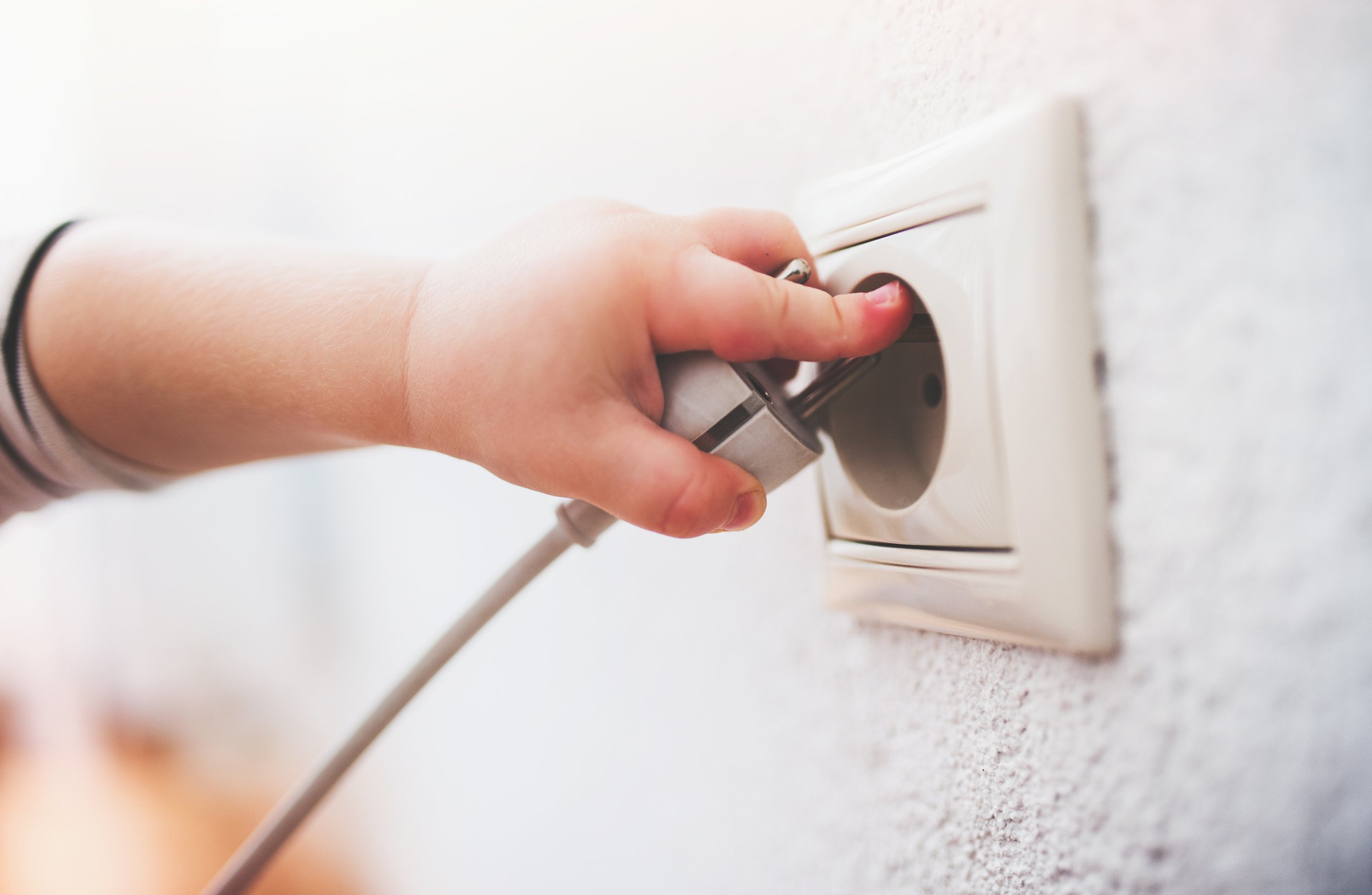Teaching your toddler to listen when you say “NO!”
It is critical that your child be able to understand and follow verbal directions, especially as they grow and become more mobile.
If your toddler hears you tell them “No!” or “Stop!” because they are running into the street or about to touch the oven, it’s important that they listen for their own safety and don’t just laugh or think it’s a game.
Babies generally understand what “no” means before they’re 12 months old.
If you’re wondering, “How do I get my toddler to listen to me?” I’m going to teach you several steps to help your child consistently understand and follow your safety directions for when it matters most.
Tips for helping your toddler listen when you say “NO!”
Tip 1 - Show your child what “no” means
Before your child begins responding to “no,” we have to teach them what no means. This is often best accomplished by demonstrating using a third party.
For example, you might take your child’s toy dog and pretend that it’s eating out of the trash can. Then you can say, “No, dog! No! No eating trash! That’s yucky!” At the same time, stop the toy dog from eating the trash.
As another example, you could send a toy car driving off the table and say “No, car — stop!” before stopping the car from driving off the table.
Whenever you’re able to show your child something that is directly related to the words you're saying, you are making it easier for them to learn.
Tip 2 - Save “no” for emergencies, Offer alternative actions when possible
Doesn’t it seem like every time you tell your toddler not to do something, that’s exactly what they try to do?
A great way to make sure your child understands that “no” means “no” is to use it sparingly, only for the most important situations. Avoid using “no” or “don’t do that” in situations that are not dangerous, as this could cause the words to lose their power.
Instead, work on encouraging your toddler to do something else that makes the unwanted behavior almost impossible. For example, if you do not want your toddler to pick their nose, have them do something else with their hands that makes it difficult to put a finger in their nose. Instead of saying “No” or “Don’t pick your nose,” try saying, “Sit on your fingers,” “Show me the number 2,” or “Clap as loud as you can.” If you’ve ever tried clapping and picking your nose at the same time, it’s virtually impossible. In this way, we reserve “no” for times when it is critical to their safety.
Coming up with alternative instructions instead of saying “no” will take some mental effort on your part, but as you practice, it will become second nature. Other examples include: “We sit down on the couch” instead of “Don’t climb on the couch,” or “Use gentle hands” instead of “No hitting.”
Tip 3 - Ensure your tone of voice matches your message
Using an assertive tone of voice is another great way to make sure your child will listen to you in urgent safety situations. If you talk to them in a playful voice, chances are your toddler will act like you’re playing a game and not stop when you ask them. By using a strong tone of voice while saying “no” or “stop,” in contrast to your play voice, you can express to your toddler that what you are doing at this moment is not a game, and they need to listen to stay safe.
Using serious and stern facial expressions will help set this tone as well.
Download our at home activity guide for teaching “NO!”
At home activity for listening to “NO!”: No Climbing
Materials:
None needed
Set-up:
Many children love to climb, either as a phase, or what feels like nonstop. While we certainly want to encourage this gross motor skill on playgrounds and climbing equipment, we often want to discourage it in home situations that feel unsafe (such as climbing on dressers or near stoves). Teaching a consistent verbal response is a great way to teach a safety rule, while also teaching a language concept: in this case “no climbing.”
Think about your child’s climbing habits--do they climb anything that feels unsafe or makes you anxious/nervous? If so, make a list of all the things they climb that you would like to stop/change that behavior.
Now think about when they climb--is there any pattern? Such as my child climbs when:
They’re not getting my attention
They’re bored
They have too much energy
We’ve been cooped up at home
My attention is on someone/something else
To get something that is up high
They are playing a game they created (such as climbing and jumping off)
To explore
Just because they love to climb
After dinner, when they’re riled up
What to do:
After determining why your child is climbing, this will help you come up with a replacement plan.
If your child is climbing for attention/bored/play types of needs, see if there are other actions you can encourage instead that they will enjoy. Such as running outside, or exploring the backyard, or just some one-on-one time with you.
If your child is climbing for sensory needs, because their body is craving these sensations, what other actions could also fill that need for them? Maybe other climbing activities like on a playground/climbing/play structure. Could you create a mountain out of pillows that they could climb? Indoor things like sensory bins or water play, while not the exact same sensory input, may also fill some of that need.
If your child is climbing because they just love to climb, it is likely a combination of some sensory needs, plus needing other play ideas.
If they are trying to get to things, can you move some things to a more accessible shelf or area, so that they can independently get those items (if safe)? Or if they see things that they shouldn't have, can those items be moved somewhere else out of view to not be tempting? Many kids will climb to get preferred toys or snacks, in which case you may be able to revamp where those items are located, so that they can safely and independently access those items.
In all of these situations, you are going to do your best to problem solve why they climb, and what you can adjust in the home environment/daily activity to fill a need, so that they don’t need to climb, and then we can practice this behavioral/language approach.
Be ready to show/tell your child something else they CAN do instead of climbing. This is important.
What to say:
You see your child climbing the _______ (table, couch, counter, dresser, etc), and you are going to redirect them calmly and concisely. Like this :
“No. No climbing. We sit on chairs” (instead of climbing on chairs/table)
“No. No climbing. Mommy will get your water.” (to help them access the item they’re trying to get)
“No. No climbing. Let’s go swing” (to replace a sensory/energy filled behavior).
“No. No climbing. Let’s finish this puzzle outside” (to get your focused attention and a new play activity)
Calmly state “No. No climbing”
Then offer a replacement behavior/activity
It is best to keep your voice calm but firm. There is no negotiation on this safety rule for your child. We ideally want to teach “no” but also to try to save it for safety situations, so that your child isn’t hearing “no” all day long. Climbing unsafely is a great example of a safety situation that your child can functionally learn from.
We are not punishing or getting upset, just trying to teach a rule and boundary, and a language concept. Each and every time your child is climbing something that you don’t want them to, redirect in this similar fashion. Ideally all caregivers will do the same, so that your child learns that they really can’t climb on the _____.
Your child may need a LOT of reminders/redirections when first learning this rule and concept. Stay consistent and they will get it.
As they are learning, they may also try to push the limits to see if you stay consistent. So don’t be alarmed if you see them trying to climb MORE for awhile, as they try to figure out if you will really redirect them all the time. Keep trying to remain consistent and soon they will really have learned this concept and rule, and the climbing will decrease.
Get 2 more free activities you can do at home to practice listening to “NO!”
You may also like this YouTube video we made talking ALLLL about toddler safety at home and how you can help your child understand your safety rules.
You May Also Like These At Home Speech Therapy Tips And Activities:
Created In Collaboration By:
Stephanie Keffer, MS CCC-SLP
Stephanie Burgener-Vader, MA CCC-SLP
Melissa Sartori, MS CCC-SLP
Yvette Faire-Bostick, MS CCC-SLP
© 2020-2025. Stephanie Keffer Hatleli, MS CCC-SLP. All Rights Reserved.
The content offered on ToddlerTalk.com is for informational purposes only. Toddler Talk is not engaged in rendering professional advice, whether medical or otherwise, to individual users or their children or families. No content on this site, regardless of date, should ever be used as a substitute for direct medical advice from your doctor, speech language pathologist, or other health professional. By accessing the content on ToddlerTalk.com, you acknowledge and agree that you are accepting the responsibility for your child’s health and well-being. In return for providing you with information related to home speech and language practice, you waive any claims that you or your child may have as a result of utilizing the content on ToddlerTalk.com.




